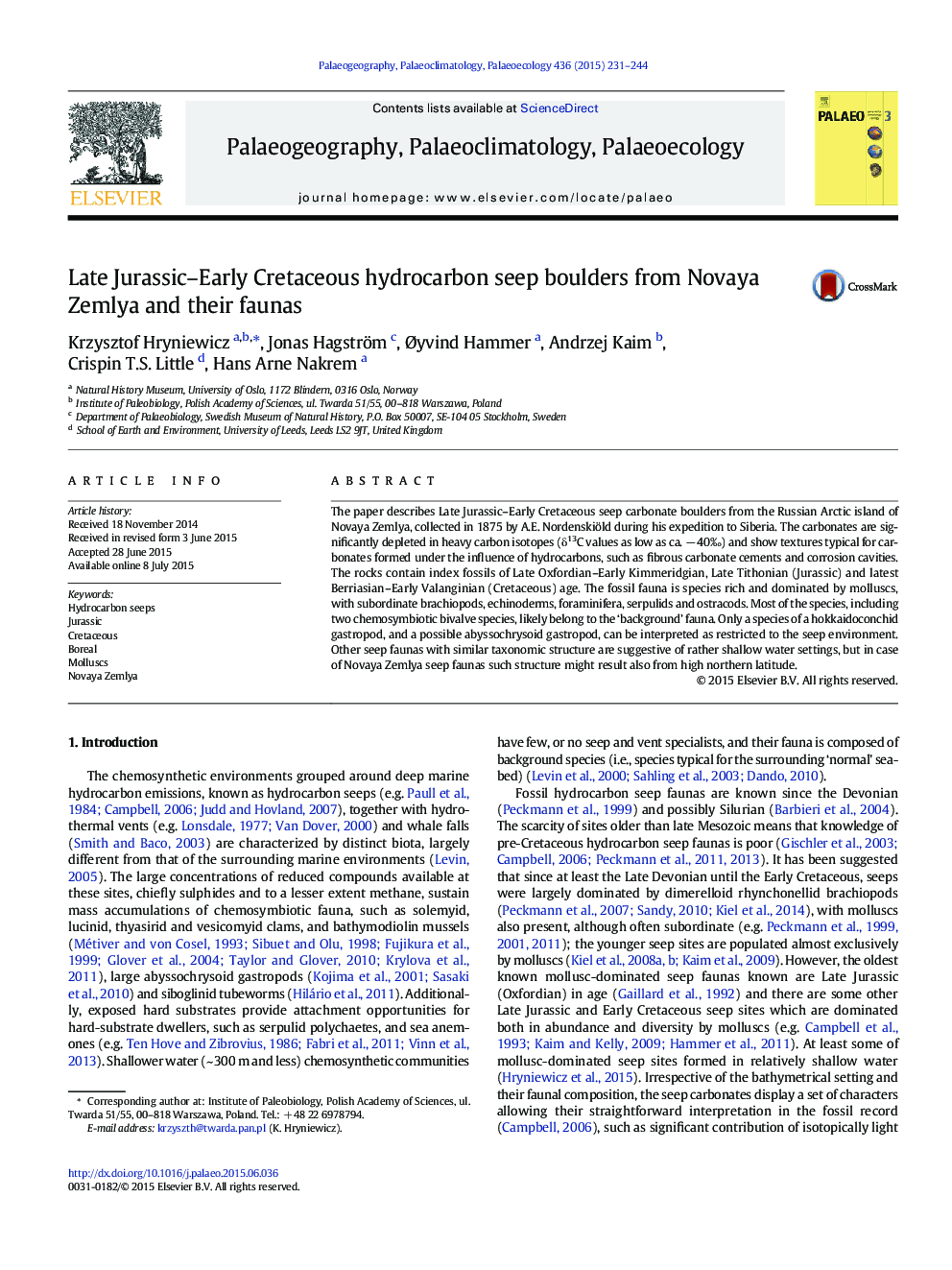| Article ID | Journal | Published Year | Pages | File Type |
|---|---|---|---|---|
| 4465908 | Palaeogeography, Palaeoclimatology, Palaeoecology | 2015 | 14 Pages |
•We identify Jurassic–Cretaceous seep carbonate erratics from Novaya Zemlya, Russia.•The boulders contain three new fossil seep faunas from the high northern latitudes.•The faunas are diverse and contain mostly background species.•The only seep specialist is a species of widespread hokkaidoconchid gastropods.
The paper describes Late Jurassic–Early Cretaceous seep carbonate boulders from the Russian Arctic island of Novaya Zemlya, collected in 1875 by A.E. Nordenskiöld during his expedition to Siberia. The carbonates are significantly depleted in heavy carbon isotopes (δ13C values as low as ca. − 40‰) and show textures typical for carbonates formed under the influence of hydrocarbons, such as fibrous carbonate cements and corrosion cavities. The rocks contain index fossils of Late Oxfordian–Early Kimmeridgian, Late Tithonian (Jurassic) and latest Berriasian–Early Valanginian (Cretaceous) age. The fossil fauna is species rich and dominated by molluscs, with subordinate brachiopods, echinoderms, foraminifera, serpulids and ostracods. Most of the species, including two chemosymbiotic bivalve species, likely belong to the ‘background’ fauna. Only a species of a hokkaidoconchid gastropod, and a possible abyssochrysoid gastropod, can be interpreted as restricted to the seep environment. Other seep faunas with similar taxonomic structure are suggestive of rather shallow water settings, but in case of Novaya Zemlya seep faunas such structure might result also from high northern latitude.
